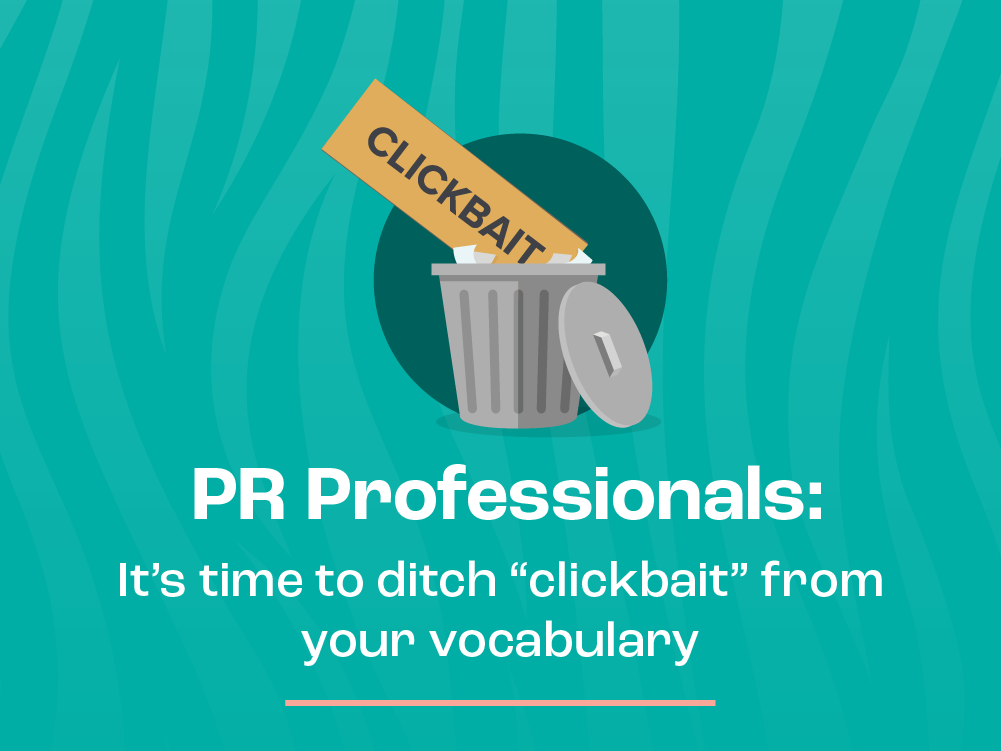
Clickbait articles have become very common online, however, the practice of click baiting is not a modern invention.
It was used in print media as far back as a hundred years ago, under the guise of other terms such as ‘yellow journalism’ and ‘check book journalism’.
The term ‘clickbait’ first appeared in a blog post by Jay Geigner back in 2006 and a decade later, the word would be entered into the Oxford English Dictionary as it become more prevalent in 21st century society.
tigerbond’s Senior Account Director, Lesley Pert, who has many years of experience in both journalism and PR, and Head of Social Media, Bryan Armit, our all-round content expert, explore what clickbait actually is, how it works, and discuss whether it has a place in your marketing strategy.
Contents
What is clickbait?
Generally speaking, clickbait is a term used for sensationalist headlines that grab people’s attention but fail to deliver the content that is promised within the headline.
In some cases, clickbait increases online advertising revenue, however the darker side of clickbait includes phishing attacks, public slander, malicious viruses and in some extreme cases, can even cause danger to life.
How clickbait works
Clickbait is pretty easy to spot these days as a similar style of words and phrases tends to be used – for example:
- She thought it was a normal photo, until she saw it!
- [celebrity name]: I’m ashamed of what I did!
- AI tech millionaire says: “If you have £170, you should do this”
The non-specific and vague headlines pique readers interests by playing with their emotions and enticing them into clicking on the link or thumbnail so they can be up to date with the latest celebrity ‘scandal’, see the ‘incredible’ photo or make some extra money like so-called ‘millionaires’ do.
This is a perfect example of what psychologists refer to as the curiosity gap.
The curiosity gap is the space between what we know (the headline) and what we don’t know (the content behind the click), which causes readers to become curious to fill this perceived knowledge gap.
Similar practices are commonplace in TikTok videos and Instagram reels, where creators will put text at the beginning of a video such as: ‘Just wait until you see the kid in glasses’, ‘What the dog does at the end [insert relevant emoji]’, or ‘We’ve got news! Can you find the clue hidden in the video?’. These are referred to as ‘hooks’.
Bryan explains, “The TikTok algorithm prioritises watch time as a key performance indicator, so naturally creators and brands look for ways to get users to watch through to the very end. By doing so they increase the odds of their video being shared to a wider audience”
However, this ‘waitbait’ approach can be harmful to brands as users are becoming savvy to it, meaning they are more likely to swipe away from videos by these content creators in future.
Should clickbait be part of your PR strategy?
The simple answer is no and Lesley has shared her thoughts on why:
“The word clickbait is shrouded in negative connotations - sensationalism, exaggeration, fake news - so if you’re purposely using this tactic for engagement, your strategy is flawed.
“First impressions count, so don’t irritate your audience.
“Consider also that directing your audience to web pages that are irrelevant or low quality will increase bounce rate and reduce engagement metrics for a website.
“The result? A poorer experience in Google’s eyes and potential diminishing of SEO ranking positions.
“I’ve seen the term ‘good clickbait’ used to describe attention-grabbing headlines and engaging copy.
“That’s not new - it’s what good PRs and journalists have been doing for years - so if you’re using the word clickbait to describe good content, it’s time to ditch it from your vocabulary.
“Keep the focus on producing brilliant copy and that’s all you need.”
Conclusion
In conclusion, while clickbait may seem like an effective short-term strategy for grabbing attention online, its long-term implications are overwhelmingly negative.
As highlighted by experts, such as Lesley, the term itself is steeped in negative connotations like sensationalism, exaggeration and fake news.
Relying on clickbait tactics not only risks irritating your audience but can also harm your website's engagement metrics and SEO rankings.
The growing awareness and aversion to clickbait among internet users, especially with the emergence of 'waitbait' on platforms like TikTok and Instagram, further emphasise the need for authenticity and quality in content creation.
The key takeaway for PR professionals is to focus on creating compelling, honest, and high-quality content.
By doing so, you maintain the integrity of your brand, foster genuine engagement, and build a sustainable online presence.
Therefore, it's time to move beyond clickbait and invest in strategies that value and respect your audience's intelligence and time.
Looking to increase your digital PR coverage the right way? Contact tigerbond’s Digital PR and SEO teams today and find out how we can help.
